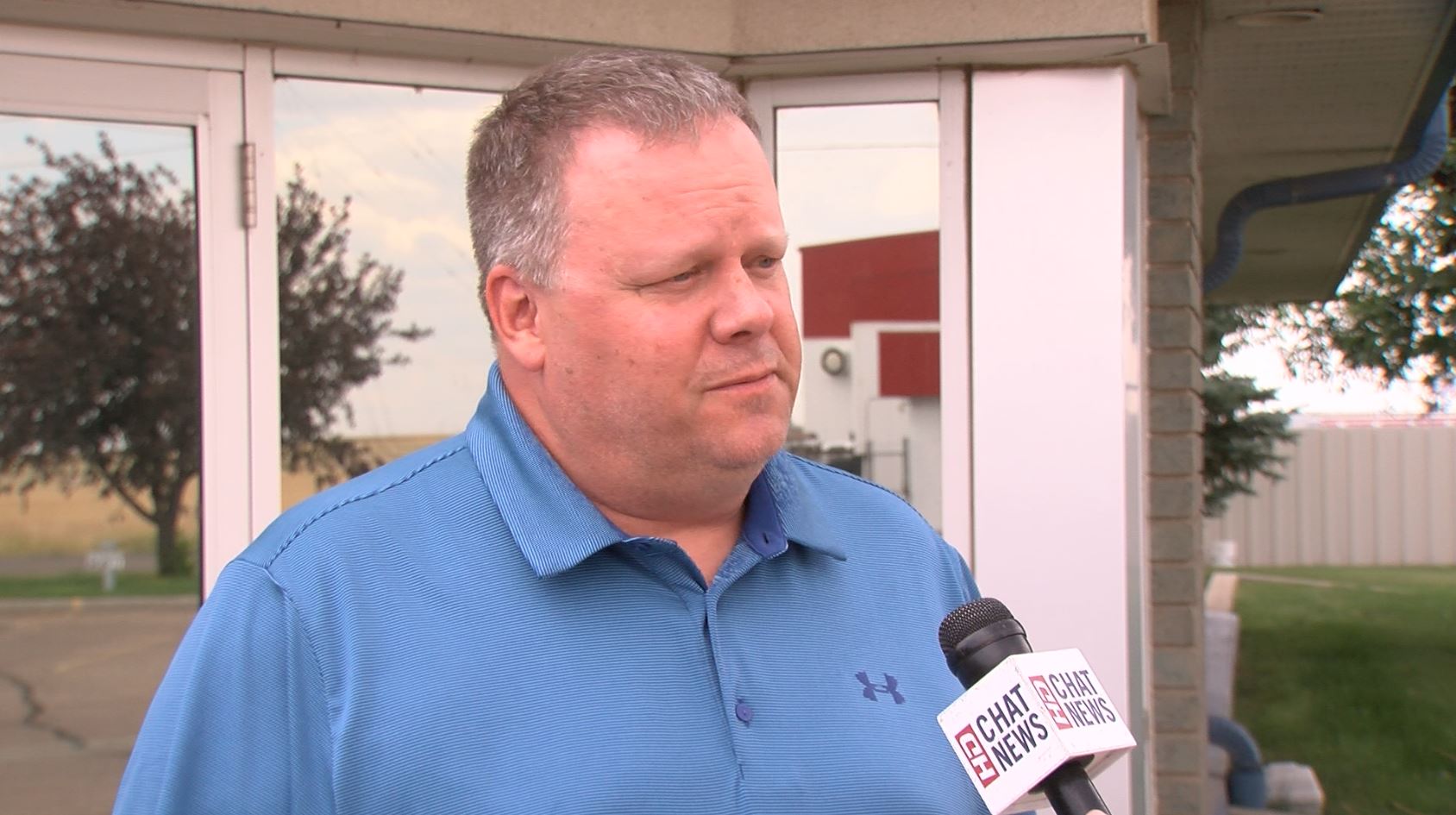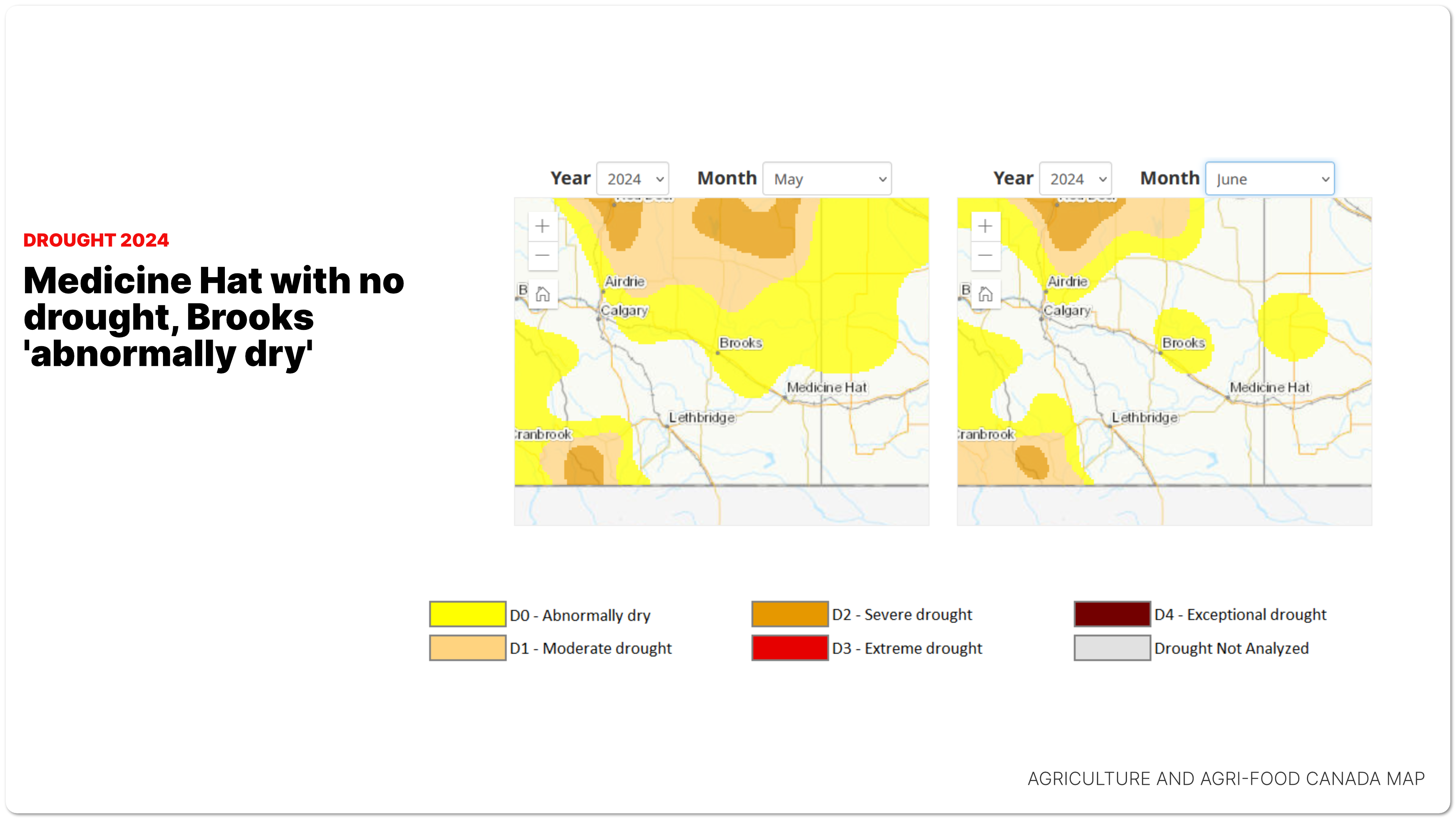
Medicine Hat, Brooks and southeastern Alberta on track to avoid severe drought, experts say
Medicine Hat, Brooks and much of southeastern Alberta is on track to avoid severe drought conditions and the mandatory water limits that would come with them, experts said as a July dominated by high temperatures comes to an end.
Downpours in May and June helped the province chart a course away from the extreme conditions and towards a more manageable, stable path for cities, towns, farmers and irrigators, according to three experts who spoke to CHAT News.


